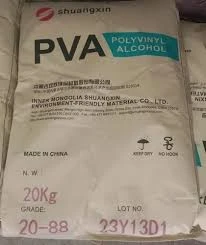Tile Bond Chemicals An Essential Component in Modern Construction
In the world of construction and home design, the choice of materials plays a critical role in the overall quality and durability of structures. One such significant component is tile bond chemicals, which serve as the adhesive that firmly holds tiles in place, ensuring they withstand the test of time. With the evolution of construction techniques and materials, tile bond chemicals have advanced considerably, contributing to the integrity and longevity of tiled surfaces.
Tile bond chemicals encompass a variety of adhesive products, including thin-set mortars, epoxy adhesives, and modified adhesives. Thin-set mortars are commonly used in residential and commercial applications due to their ease of use and versatility. These adhesives usually consist of a mixture of cement, fine aggregates, and various additives that enhance performance characteristics such as flexibility, adhesion, and water resistance. This adaptability makes thin-set mortars suitable for a multitude of surfaces, including concrete, drywall, and even existing tile.
Epoxy adhesives represent another category within tile bond chemicals
. Known for their exceptional bonding properties, epoxy adhesives are ideal for high-stress environments and are often used in areas subjected to heavy foot traffic, such as hospitals, schools, and retail spaces. These adhesives can create a waterproof barrier, making them perfect for use in wet areas like kitchens and bathrooms. Additionally, epoxy adhesives are resistant to chemicals, making them suitable for industrial applications where exposure to harsh substances is common.Modified adhesives have recently gained popularity, as they combine the benefits of traditional thin-set mortars with polymer-modified additives. These additives improve flexibility and bond strength, making modified adhesives suitable for various substrates and conditions. For instance, they can accommodate slight movements in the substrate without compromising the integrity of the tile installation, which is particularly important in high-traffic areas or fluctuating climates.
tile bond chemical

The selection of tile bond chemicals should be guided by several factors, including the type of tile being used, the substrate material, and the intended use of the area. For example, porcelain tiles, known for their density and low porosity, often require a specific type of adhesive that can effectively bond with such materials. Meanwhile, natural stones like granite or marble might necessitate a specialized adhesive that addresses their unique properties and prevents staining.
Environmental considerations have also shaped the development of tile bond chemicals. Many manufacturers offer eco-friendly options that meet stringent environmental standards. These products often contain fewer volatile organic compounds (VOCs), making them safer for indoor air quality. Moreover, innovative formulations have been designed to enhance performance while reducing the environmental impact, aligning with the growing demand for sustainable building practices.
Installing tiles with the correct type of bond chemical is crucial. An improper adhesive choice can lead to a host of problems, including tile cracking, moisture infiltration, and eventual detachment. Moreover, the technique used during installation plays a significant role in achieving a successful bond. Following the manufacturer’s guidelines for mixing, applying, and curing the adhesive is essential to ensure the best results.
In conclusion, tile bond chemicals are a fundamental element in the construction and renovation of tiled surfaces. As technology progresses, these adhesives continue to evolve, providing improved performance, sustainability, and versatility. Choosing the right tile bond chemicals not only affects the aesthetic appeal of a space but also its structural integrity and longevity. As such, understanding the various options available and their appropriate applications is paramount for both homeowners and professionals in the construction industry. By investing in quality tile bond chemicals, one ensures that their tiled surfaces remain beautiful and functional for years to come.
-
Rdp Powder: Key Considerations for Wholesalers in the Building Materials IndustryNewsJul.08,2025
-
Key Considerations for Wholesalers: Navigating the World of Hpmc - Based ProductsNewsJul.08,2025
-
Hpmc Detergent: Key Considerations for WholesalersNewsJul.08,2025
-
Key Considerations for Wholesalers: China Hpmc For Tile Adhesive, Coating Additives, Concrete Additives, and MoreNewsJul.08,2025
-
Crucial Considerations for Wholesalers: Navigating the World of Construction MaterialsNewsJul.08,2025
-
Key Considerations for Wholesalers Sourcing Additive For Cement, Additive For Concrete, Additive For Putty from Additive Manufacturer Shijiazhuang Gaocheng District Yongfeng Cellulose Co., Ltd.NewsJul.08,2025




